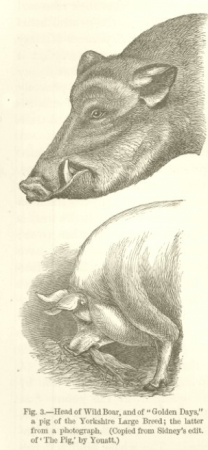
Evan Ratliff has an excellent article that ties well into our discussions of evolution. It’s on the breeding of foxes to make them want human companionship, much the same way wolves were domesticated.
… researchers … gathered up 130 foxes from fur farms. They then began breeding them with the goal of re-creating the evolution of wolves into dogs, a transformation that began more than 15,000 years ago.
— Ratliff (2011), in National Geographic, Taming the Wild

It worked remarkably well, and not just with foxes, but with rats and mink as well.
The scientist in charge, Dmitry Belyaev, was looking into something that Darwin observed in 1868: domesticated animals are smaller, with floppier ears and curlier tails, than their untamed ancestors.
In terms that we’ve studied, domesticated animals all have similar physical characteristics (phenotype) and Belyaev wanted to find the genotype. His theory is that there is:
… a collection of genes that conferred a propensity to tameness—a genotype that the foxes perhaps shared with any species that could be domesticated.
— Ratliff (2011), in National Geographic, Taming the Wild
Just as a side note, we have hairless foxes here on one of the barrier islands. Must be a small gene pool. The researchers also located sporadic outbreaks (if a mutation can be classified that way) in other regions. Finland is the only other permanent pack. Apparently, foxes mutate easily. (I can’t find a link because it was a senior research paper at the College of Charleston. We read the wall poster the other day.)
That’s really neat. I’d not heard of the sensitivity of foxes.